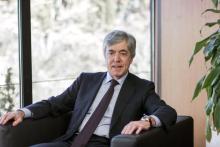
The importance of direct investment lies in the benefits it provides to the host country, such as job creation, increased savings and the acquisition of foreign currency.
The analysis of the dynamics of Direct Investment (DI) in Paraguay between 2019 and 2023 shows volatile behavior, with periods of capital inflows and outflows, according to data from the Central Bank of Paraguay (BCP).
In the first quarter of 2019, the investment flow reported an inflow of US$ 277.1 million, but closed the year with a net outflow of US$ 180.6 million in the last quarter, reflecting a variation of -65.2%.
In 2020, despite the decline recorded in the first quarter, the second quarter showed a significant rebound. However, the downward trend resumed in the second half of the year, closing with an outflow of US$ 58.3 million.
Volatility increased in 2021. A strong capital outflow of US$217.9 million was reported in the first quarter, followed by inflows in the two subsequent quarters, with US$243.07 million and US$309.7 million, respectively.
Finally, it was located with a new outflow of US$ 66.7 million in the last quarter. In 2022, ID reached its highest level in the first quarter, with US$ 513.5 million.
However, in the following quarters, the flow showed a downward trend, closing the year at US$ 52.2 million.
While in 2023 it maintained an unstable performance. The first quarter recorded an outflow of US$ 168.5 million, followed by moderate income in the following quarters, closing with US$ 174.3 million in the last quarter.
Unlike in 2022, the drop in investment in 2023 was linked to a reduction in loans between companies. In 2019, direct investment represented 0.92% of the Gross Domestic Product (GDP), falling to 0.89% in 2020 and to 0.67% in 2021.
In 2022, the indicator experienced a significant rebound to 1.91%, before declining again in 2023, standing at 0.75% of GDP.
The analysis reveals that while ID has shown some resilience after periods of capital outflows, its performance remains erratic.
The variability in investment inflows suggests the influence of both internal and external factors, including macroeconomic stability, the investment climate and global market conditions.
A report by the Economic Commission for Latin America and the Caribbean (ECLAC) had stated that, despite the drop in ID in 2023, announcements of investment projects in the country had increased, reflecting the interest of investors in Paraguay.
Therefore, to strengthen the flow of foreign investment, it is essential to implement policies that generate greater confidence and predictability, guaranteeing an enabling environment for attracting capital.









